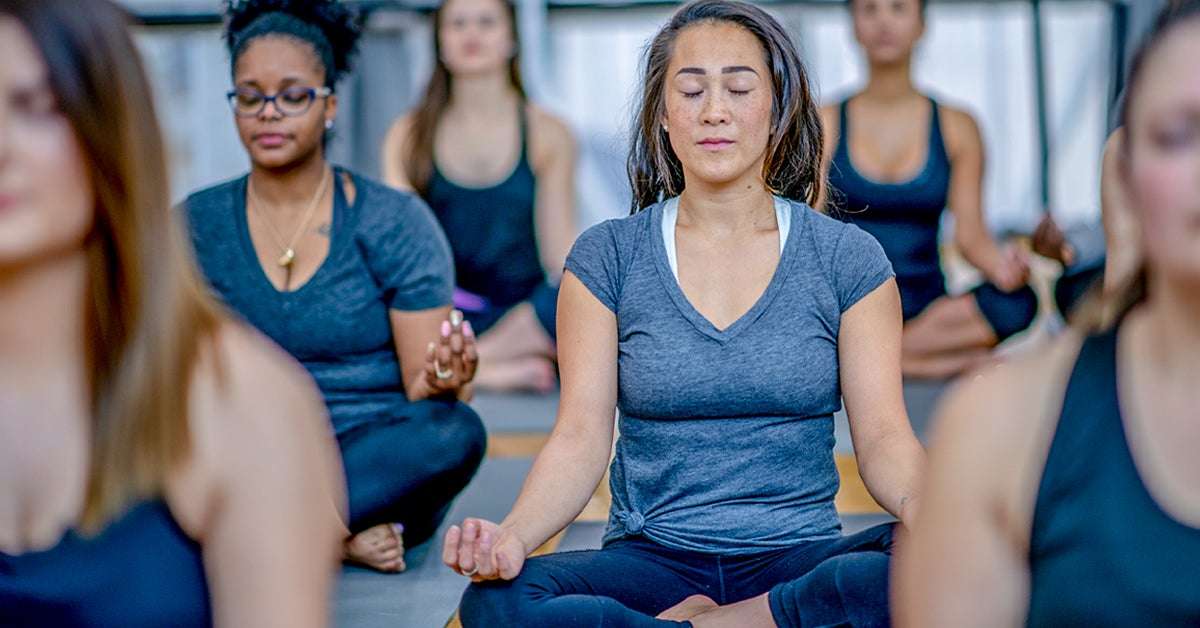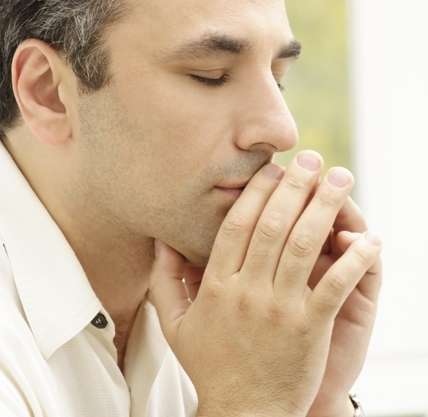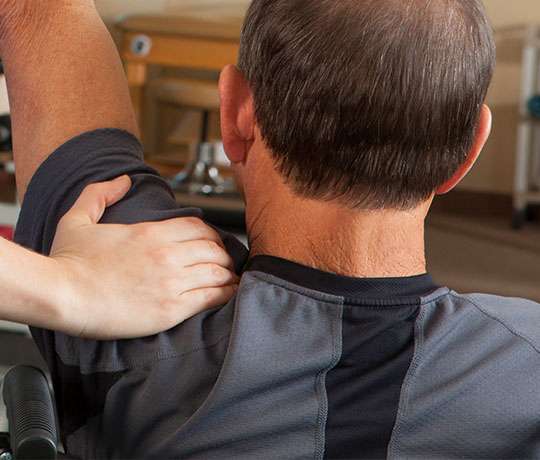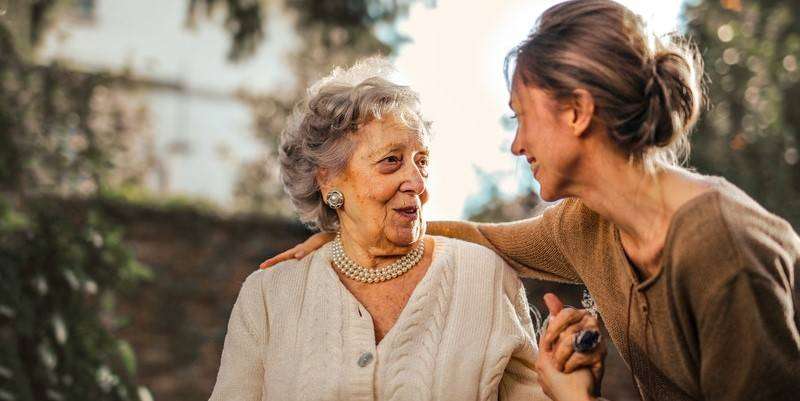
Share on Pinterest
If you feel breathless due to anxiety, there are breathing techniques you can try to alleviate symptoms and start feeling better.
Let’s look at several you can do on at any point during your day or build into longer moments for yourself.
1. Lengthen your exhale
Inhaling deeply may not always calm you down. Taking a deep breath in is actually linked to the sympathetic nervous system, which controls the fight-or-flight response. But exhaling is linked to the parasympathetic nervous system, which influences our body’s ability to relax and calm down.
Taking too many deep breaths too quickly can actually cause you to hyperventilate. Hyperventilation decreases the amount of oxygen-rich blood that flows to your brain.
When we feel anxious or under stress, it’s easier to breathe too much and end up hyperventilating — even if we’re trying to do the opposite.
- Before you take a big, deep breath, try a thorough exhale instead. Push all the air out of your lungs, then simply let your lungs do their work inhaling air.
- Next, try spending a little bit longer exhaling than you do inhaling. For example, try inhaling for four seconds, then exhale for six.
- Try doing this for two to five minutes.
This technique can be done in any position that’s comfortable for you, including standing, sitting, or lying down.
2. Abdomen breathing
Breathing from your diaphragm (the muscle that sits just beneath your lungs) can help reduce the amount of work your body needs to do in order to breathe.
To learn how to breathe from your diaphragm:
Check-in
- For comfort, lie down on the floor or bed with pillows beneath your head and knees. Or sit in a comfortable chair with your head, neck, and shoulders relaxed, and your knees bent.
- Then, put one hand under your rib cage and one hand over your heart.
- Inhale and exhale through your nose, noticing how or if your stomach and chest move as you breathe.
- Can you isolate your breathing so you bring air deeper into your lungs? What about the reverse? Can you breathe so your chest moves more than your stomach?
Eventually, you want your stomach to move as you breathe, instead of your chest.
Practice belly breathing
- Sit or lie down as described above.
- Place one hand on your chest and one hand on your stomach somewhere above your belly button.
- Breathe in through your nose, noticing your stomach rise. Your chest should remain relatively still.
- Purse your lips and exhale through your mouth. Try engaging your stomach muscles to push air out at the end of the breath.
For this type of breathing to become automatic, you’ll need to practice it daily. Try doing the exercise three or four times a day for up to 10 minutes.
If you haven’t been using your diaphragm to breathe, you may feel tired at first. It’ll get easier with practice though.
3. Breath focus
When deep breathing is focused and slow, it can help reduce anxiety. You can do this technique by sitting or lying down in a quiet, comfortable location. Then:
- Notice how it feels when you inhale and exhale normally. Mentally scan your body. You might feel tension in your body that you never noticed.
- Take a slow, deep breath through your nose.
- Notice your belly and upper body expanding.
- Exhale in whatever way is most comfortable for you, sighing if you wish.
- Do this for several minutes, paying attention to the rise and fall of your belly.
- Choose a word to focus on and vocalize during your exhale. Words like “safe” and “calm” can be effective.
- Imagine your inhale washing over you like a gentle wave.
- Imagine your exhale carrying negative and upsetting thoughts and energy away from you.
- When you get distracted, gently bring your attention back to your breath and your words.
Practice this technique for up to 20 minutes daily when you can.
4. Equal breathing
Another form of breathing that stems from the ancient practice of pranayama yoga is equal breathing. This means you’re inhaling for the same amount of time as you’re exhaling.
You can practice equal breathing from a sitting or lying-down position. Whichever position you choose, be sure to get comfortable.
- Shut your eyes and pay attention to the way you normally breathe for several breaths.
- Then, slowly count 1-2-3-4 as you inhale through your nose.
- Exhale for the same four-second count.
- As you inhale and exhale, be mindful of the feelings of fullness and emptiness in your lungs.
As you continue practicing equal breathing, your second count might vary. Be sure to keep your inhale and exhale the same.
5. Resonant breathing
Resonant breathing, also called coherent breathing, can help you calm anxiety and get into a relaxed state. To try it yourself:
- Lie down and close your eyes.
- Gently breathe in through your nose, mouth closed, for a count of six seconds.
- Don’t fill your lungs too full of air.
- Exhale for six seconds, allowing your breath to leave your body slowly and gently. Don’t force it.
- Continue for up to 10 minutes.
- Take a few additional minutes to be still and focus on how your body feels.
Yogic breathing (pranayama)
Yoga is a wellness practice with ancient roots, and breathing is at the heart of each variation of yoga.
One form of yoga, pranayama, includes multiple breathing variations that may help with anxiety. Some of these include lengthened exhale and equal breathing (both featured above), as well as lion’s breath and alternate nostril breathing (nadi shodhana).
6. Lion’s breath
Lion’s breath involves exhaling forcefully. To try lion’s breath:
- Get into a kneeling position, crossing your ankles and resting your bottom on your feet. If this position isn’t comfortable, sit cross-legged.
- Bring your hands to your knees, stretching out your arms and your fingers.
- Take a breath in through your nose.
- Breathe out through your mouth, allowing yourself to vocalize “ha.”
- During exhale, open your mouth as wide as you can and stick your tongue out, stretching it down toward your chin as far as it will go.
- Focus on the middle of your forehead (third eye) or the end of your nose while exhaling.
- Relax your face as you inhale again.
- Repeat the practice up to six times, changing the cross of your ankles when you reach the halfway point.
7. Alternate nostril breathing
To try alternate nostril breathing, sit down in a comfortable place, lengthening your spine and opening your chest.
Rest your left hand in your lap and raise your right hand. Then, rest the pointer and middle fingers of your right hand on your forehead, in between the eyebrows. Close your eyes, inhaling and exhaling through your nose.
- Use your right thumb to close the right-hand nostril and inhale slowly through the left.
- Pinch your nose closed between your right thumb and ring finger, holding the breath in for a moment.
- Use your right ring finger to close your left nostril and exhale through the right, waiting for a moment before you inhale again.
- Inhale slowly through the right nostril.
- Pinch your nose closed again, pausing for a moment.
- Now, open the left side and exhale, waiting a moment before you inhale again.
- Repeat this cycle of inhaling and exhaling through either nostril up to 10 times. Each cycle should take up to 40 seconds.
8. Guided meditation
Some people use guided meditation to alleviate anxiety by interrupting patterns of thinking that perpetuate stress.
You can practice guided meditation by sitting or lying in a cool, dark, comfortable place and relaxing. Then, listen to calming recordings while relaxing your body and steadying your breathing.
Guided meditation recordings help take you through the steps of visualizing a calmer, less stressed reality. It can also help you gain control over intrusive thoughts that trigger anxiety.
Meditation can help you establish new habits and patterns of thinking. If you’d like to try it yourself, UCLA has guided meditation recordings available for streaming here.
The takeaway
If you’re experiencing anxiety or panic attacks, try using one or more of these breathing techniques to see if they can alleviate your symptoms.
If your anxiety persists or gets worse, make an appointment with your doctor to discuss your symptoms and possible treatments. With the right approach, you can regain your quality of life and control over your anxiety.
Breathing is a necessity of life that usually occurs without much thought. When you breathe in, blood cells receive oxygen and release carbon dioxide. Carbon dioxide is a waste product that’s carried back through your body and exhaled.
Improper breathing can upset the oxygen and carbon dioxide exchange and contribute to anxiety, panic attacks, fatigue, and other physical and emotional disturbances.
The next time you’re feeling anxious, there are a variety of anxiety breathing exercises to try. Learn how to use breathing exercises to help relieve feelings of anxiety and stress.
Tip
How you breathe in and how depends on the type of breathing exercise you are using. Many breath exercises involve breathing in slowly through your nose and exhaling through your mouth., but some others may direct you to breathe in and out through your nose.
Alternate-Nostril Breathing
Alternate-nostril breathing (nadi shodhana) involves blocking off one nostril at a time as you breathe through the other, alternating between nostrils in a regular pattern. It’s best to practice this type of anxiety-relieving breathing in a seated position in order to maintain your posture.
- Position your right hand by bending your pointer and middle fingers into your palm, leaving your thumb, ring finger, and pinky extended. This is known as Vishnu mudra in yoga.
- Close your eyes or softly gaze downward.
- Inhale and exhale to begin.
- Close off your right nostril with your thumb.
- Inhale through your left nostril.
- Close off your left nostril with your ring finger.
- Open and exhale through your right nostril.
- Inhale through your right nostril.
- Close off your right nostril with your thumb.
- Open and exhale through your left nostril.
- Inhale through your left nostril.
Work up to 10 rounds of this breathing pattern. If you begin to feel lightheaded, take a break by releasing both nostrils and breathing normally.
Belly Breathing
According to The American Institute of Stress, 20 to 30 minutes of “belly breathing,” also known as abdominal breathing or diaphragmatic breathing, each day can reduce stress and anxiety.
Find a comfortable, quiet place to sit or lie down. For example, try sitting in a chair, sitting cross-legged, or lying on your back with a small pillow under your head and another under your knees.
- Place one hand on your upper chest and the other hand on your belly, below the ribcage.
- Allow your belly to relax, without forcing it inward by squeezing or clenching your muscles.
- Breathe in slowly through your nose. The air should move into your nose and downward so that you feel your stomach rise with your other hand and fall inward (toward your spine).
- Exhale slowly through slightly pursed lips. Take note of the hand on your chest, which should remain relatively still.
Although the sequence frequency will vary according to your health, most people begin by doing the exercise three times and working up to five to 10 minutes, one to four times a day.
Box Breathing
Also known as four-square breathing, box breathing is very simple to learn and practice. In fact, if you’ve ever noticed yourself inhaling and exhaling to the rhythm of a song, you’re already familiar with this type of paced breathing. It goes like this:
- Exhale to a count of four.
- Hold your lungs empty for a four-count.
- Inhale to a count of four.
- Hold the air in your lungs for a count of four.
- Exhale and begin the pattern anew.
4-7-8 Breathing
The 4-7-8 breathing exercise, also called the relaxing breath, acts as a natural tranquilizer for the nervous system. At first, it’s best to perform the exercise seated with your back straight. Once you become more familiar with this breathing exercise, however, you can perform it while lying in bed.
- Place and keep the tip of your tongue against the ridge of tissue behind your upper front teeth for the duration of the exercise.
- Completely exhale through your mouth, making a “whoosh” sound.
- Close your mouth and inhale quietly through your nose to a mental count of four.
- Hold your breath for a count of seven.
- Exhale completely through your mouth, making a whoosh sound to a count of eight.
Lion’s Breath
Lion’s breath, or simhasana in Sanskrit, during which you stick out your tongue and roar like a lion, is another helpful deep breathing practice. It can help relax the muscles in your face and jaw, alleviate stress, and improve cardiovascular function.
The exercise is best performed in a comfortable, seated position, leaning forward slightly with your hands on your knees or the floor.
- Spread your fingers as wide as possible.
- Inhale through your nose.
- Open your mouth wide, stick out your tongue, and stretch it down toward your chin.
- Exhale forcefully, carrying the breath across the root of your tongue.
- While exhaling, make a “ha” sound that comes from deep within your abdomen.
- Breathe normally for a few moments.
- Repeat lion’s breath up to seven times.
Mindfulness Breathing
Mindfulness meditation involves focusing on your breathing and bringing your attention to the present without allowing your mind to drift to the past or future. Engaging in mindfulness breathing exercises serves the same purpose, which can help ease your anxiety.
One mindfulness breathing exercise to try involves choosing a calming focus, including a sound (“om”), positive word (“peace”), or phrase (“breathe in calm, breathe out tension”) to repeat silently as you inhale or exhale. Let go and relax. If you notice that your mind has drifted, take a deep breath and gently return your attention to the present.
Pursed-Lip Breathing
Pursed-lip breathing is a simple breathing technique that will help make deep breaths slower and more intentional. This technique has been found to benefit people who have anxiety associated with lung conditions like emphysema and chronic obstructive pulmonary disease (COPD).
- Sit in a comfortable position with your neck and shoulders relaxed.
- Keeping your mouth closed, inhale slowly through your nostrils for two seconds.
- Exhale through your mouth for four seconds, puckering your lips as if giving a kiss.
- Keep your breath slow and steady while breathing out.
To get the correct breathing pattern, experts recommend practicing pursed-lip breathing four to five times a day.
Resonance Breathing
Resonance breathing, or coherent breathing, can help you get into a relaxed state and reduce anxiety.
- Lie down and close your eyes.
- Gently breathe in through your nose, mouth closed, for a count of six seconds. Don’t fill your lungs too full of air.
- Exhale for six seconds, allowing your breath to leave your body slowly and gently without forcing it.
- Continue for up to 10 minutes.
- Take a few additional minutes to be still and focus on how your body feels.
Simple Breathing Exercise
You can perform this simple breathing exercise as often as needed. It can be done standing up, sitting, or lying down. If you find this exercise difficult or believe it’s making you anxious or panicky, stop for now. Try it again in a day or so and build up the time gradually.
- Inhale slowly and deeply through your nose. Keep your shoulders relaxed. Your abdomen should expand, and your chest should rise very little.
- Exhale slowly through your mouth. As you blow air out, purse your lips slightly but keep your jaw relaxed. You may hear a soft “whooshing” sound as you exhale.
- Repeat this breathing exercise. Do it for several minutes until you start to feel better.
Sometimes people with a panic disorder initially feel increased anxiety or panic while doing this exercise. This may be due to anxiety caused by focusing on your breathing, or you may be unable to do the exercise correctly without some practice.
Shallow Breathing Contributes to Anxiety
When people are anxious, they tend to take rapid, shallow breaths that come directly from the chest.
This type of breathing, called thoracic or chest breathing, causes an upset in the body’s oxygen and carbon dioxide levels, resulting in increased heart rate, dizziness, muscle tension, and other physical sensations. Your blood is not being properly oxygenated, and this may signal a stress response that contributes to anxiety and panic attacks.
Diaphragmatic or deep breathing, on the other hand, stimulates the parasympathetic nervous system, which is part of the peripheral nervous system responsible for regulating heartbeat, blood flow, breathing, and digestion.
Deep breathing helps you avoid the “fight-or-flight” response (acute stress response) to mentally or physically terrifying situations.
Any type of deep breathing exercise can be effective for relieving anxiety. Experiment with a few different types to figure out which one is most effective and practical for you.
Chest vs. Abdominal Breathing
Most people aren’t really conscious of the way they’re breathing but, generally, there are two types of breathing patterns:
- Diaphragmatic (abdominal) breathing: This type of breathing is a type of deep, even breathing that engages your diaphragm, allowing your lungs to expand and creating negative pressure that drives air in through the nose and mouth, filling your lungs. This is the way newborn babies naturally breathe. You’re also probably using this pattern of breathing when you’re in a relaxed stage of sleep.
- Thoracic (chest) breathing: This type of breathing comes from the chest and involves short, rapid breaths. When you’re anxious, you might not even be aware that you’re breathing this way.
The easiest way to determine your breathing pattern is to put one hand on your upper abdomen, near the waist, and the other in the middle of your chest. As you breathe, notice which hand raises the most.
If you’re breathing properly, your abdomen should expand and contract with each breath (and the hand on it should raise the most). It’s especially important to be aware of these differences during stressful and anxious times when you’re more likely to breathe from your chest.
Pay attention to how you breathe when you are relaxed vs. when you feel stressed and anxious. Practicing breath exercises regularly can help you learn to consciously shift to this type of breathing when stressed, which can calm your body and induce a relaxation response.
A Word From Verywell
To make deep breathing work for you, it’s essential to listen to your body and be mindful of how anxiety is impacting your everyday life. If after practicing deep breathing you still feel severe anxiety, consider consulting a mental health professional or medical doctor for assessment and recommendations for treatment.
If you have a lung condition like COPD or asthma, or you’re experiencing pain or difficulty breathing, speak with a healthcare provider before trying any type of breathing exercise.
Frequently Asked Questions
-
Do breath exercises work?
Research has shown that learning proper breath control can significantly improve well-being, combat feelings of stress, and relieve anxiety.
-
Why do breathing exercises help with anxiety?
Breathing exercises help put your body in a relaxed state and, when your body is relaxed, your brain becomes more relaxed too.
-
What deep breathing techniques are the most effective?
There are a number of deep breathing exercises can offer relief from anxiety from alternate-nostril breathing to box breathing and resonance breathing to belly breathing. Practice several techniques and see how they make you feel. You may notice that you prefer some techniques over others.
-
What can I do to relieve my anxiety if breathing exercises don’t work?
There are many different treatment options for anxiety, from therapy to medications. So, if breathing exercises don’t provide anxiety relief, talk to a healthcare provider about other options available to you.



